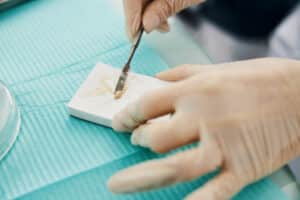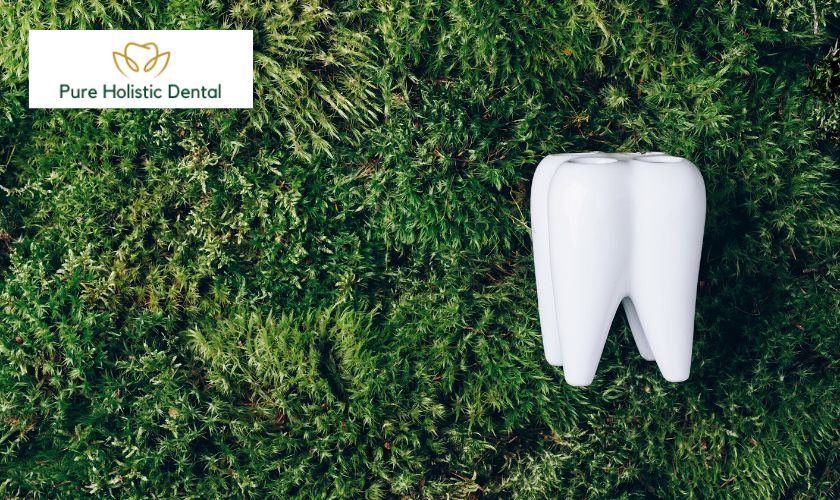Dental fillings are an essential part of dental care. They help to fill cavities and repair tooth decay. However, not all dental fillings are equal. Some contain mercury, which can be toxic to the body, while others are biocompatible and pose no risk to your health. Biocompatible dental fillings are an alternative to mercury-based fillings. They have many benefits, and you can also eliminate the health risks associated with mercury and other metals.
What Are Biocompatible Dental Fillings?
Various types of dental fillings restore teeth, but not all are biocompatible. Biocompatible dental fillings are made from materials compatible with the human body and won’t cause any adverse reactions. They are metal and BPA-free and do not harm the patient’s health.
Mercury amalgam fillings are the most common type of filling, but they’re also the most controversial because of the health risks associated with mercury exposure. Several options are available if you’re looking for a safe and biocompatible alternative to mercury amalgam fillings.
Composite resin fillings comprise a mixture of glass and plastic particles and can match the color of your natural teeth. There are also ceramic fillings, which are what we use in our office, made from natural materials like quartz or crushed glass. These fillings are safe, effective, and a great alternative to mercury amalgam fillings.
Why Are Biocompatible Dental Fillings Better?
When it comes to dental health, prevention is the best route to take. The best way to do this is by getting natural, minimally invasive biocompatible dental fillings. Mercury-free dental fillings are safe for oral use and do not harm the surrounding tooth. The benefits of biocompatible dental fillings are:
Natural Appearance
Biocompatible fillings are often referred to as tooth-colored fillings. They mimic your tooth’s color perfectly. Biocompatible resin is made up of composite resin. Composite resin is a polymer-based material used in dentistry for aesthetic purposes. It is a combination of glass and quartz-like particles. They are highly customizable, and the dentist can match the shade of the composite resin with your teeth. Composite resin fillings blend in with your teeth after being placed. These dental fillings are virtually invisible and look no different than your natural, healthy tooth structure.
Interaction With Tooth Structure
Traditional metal dental fillings become pretty obvious when the patient talks or smiles. Typical conventional metal dental fillings comprise:
- Mercury
- Tin
- Silver
- Gold
- Copper
Individuals with metal allergies can face adverse reactions if they get metal fillings. When you bite and chew, metal tends to cause more friction against the opposite tooth structure. Their shape changes as time passes.
Biocompatible dental fillings are much more favorable to your tooth structure. They bond much more securely and also retain the shape of your tooth. They also cause lesser friction and reduce the risk of wear and damage to the opposite tooth.
Long-Lasting
Patients get dental fillings to prevent and cure cavities. The tooth’s enamel wears down when it gets infected with cavity-causing bacteria and becomes incurable. Biological dentists clean out this infected area and fill it with different materials to prevent further damage. This area is susceptible to infection and more harmful oral diseases if left untreated.
Biocompatible dental fillings help avoid cavities after the patient gets them. A tooth-colored filling reduces the risk of needing more extensive treatments in the future, like root canal treatments or a tooth extraction for the same tooth.

Types Of Biocompatible Fillings
There are many types of biocompatible dental fillings available at biological dentists. Some of the most popular biocompatible dental fillings are:
Porcelain
Porcelain dental fillings are the most popular material for dental fillings, after metal. The porcelain material consists of oxygen and silicon compounded into a non-crystalline glass. They are metal-free, mercury-free, and BPA-free. Unlike metal fillings, your dentist can shade porcelain fillings according to the color of your tooth. They are a lot natural looking and safer too.
Porcelain dental fillings are chemically stable and offer the same strength as their metal counterparts. A regular porcelain filling can last for as long as 15 years. Some of the most significant benefits of porcelain dental fillings are:
-
Virtually invisible: Nobody can detect if you have porcelain fillings.
-
Durability: Porcelain fillings are much stronger and have lesser chances of wear and tear. Your porcelain fillings can last for as long as 10-15 years with proper maintenance.
-
Aesthetic: Your dentist can easily replicate the color and tint of your dental fillings with your natural tooth with the help of porcelain. They are incredibly customizable and conveniently match your tooth.
Plastic
When you hear/read about plastic dental fillings, you might think about materials that harm the earth profusely. However, this is a common misconception.
No dental filling is made of 100% plastic. Some are a combination of plastic and resin. They are referred to as white fillings or tooth-colored fillings. These fillings easily blend in with your natural tooth and give it a pleasing appearance.
Plastic fillings combine various counter-activating components and take a shorter time to cure. They are more suitable than other dental fillings, as plastic fillings last longer and can take more pressure than traditional ones. Sometimes, biological dentists use UV light to ‘cure’ this material on your tooth.
Plastic dental fillings are the best for you if you need stump development or to cover a larger area towards the inside of your tooth. It forms a chemical compound that bonds well with the dentin and enamel of your tooth. There are little to no chances of being allergic to plastic, so it is suitable regardless of medical conditions.
They are the most recent materials used for dental fillings, which are popularized for being personalized according to the patient’s preferences.
Resin
Resin dental fillings offer aesthetic advantages that metal or mercury fillings cannot. They are as strong as mercury fillings but have no health risks and look natural. If you have multiple fillings on your teeth, resin fillings are the best for you. The various benefits of resin fillings are:
Look like natural teeth: It is easy to make resin fillings look like your teeth. Your dentist can easily duplicate the color and even shape the resin according to the shape of your teeth.
Do not damage the teeth: Cracked teeth can cause pain and is susceptible to more damage from breakage and infection. Mercury fillings can expand and contract due to changes in temperatures. Dentists switch to resin fillings to save the patient from future damage to their tooth.
Needs fewer appointments: Putting mercury and amalgam dental fillings is a complex process that takes a lot of time. It usually requires three appointments to add these fillings. Your dentist will complete resin fillings in just a few minutes. It depends on how many teeth require treatment. One visit is all it takes to place and set the filling.
Resin dental fillings have many other benefits too. They do not stain like mercury and need less drilling to get fitted too. Patients can also get resin sealants to protect their teeth from further harm.
Do Biocompatible Fillings Hurt?
Biocompatible fillings are less invasive than mercury dental fillings. They are also easy to fill and cure, reducing treatment time.
The only time biocompatible dental fillings will hurt is when the biological dentist applies the numbing agent. You will feel a light ‘pinch’ as the dentist injects it into the operation area. You may also experience sensitivity to hot and cold temperatures for some days after getting fillings. Dentists advise applying ice packs on your cheeks to reduce swelling and ease the pain. Gargling with lukewarm water with a pinch of salt disinfects the area and reduces the risk of infection.
How To Take Care Of Biocompatible Fillings?
Biocompatible dental fillings can last up to 15-20 years if properly cared for. It is important to practice a good oral hygiene routine if you want your fillings in optimal condition. Biological dentists advise you to brush and floss your teeth twice daily, preferably before and after you go to sleep. You can also get teeth cleaning treatments to keep your fillings clean and free from bacteria.
The Bottom Line
Biocompatible dental fillings are undoubtedly better than mercury fillings. They are healthier than mercury fillings, which cause numerous health problems. A few options are available if you’re looking for an alternative to mercury in dental fillings. Biocompatible dental fillings contain materials compatible with the human body, so they’re a safe and effective option. Talk to your dentist about biocompatible dental fillings and see if they’re right.



